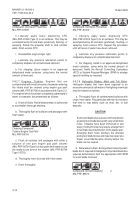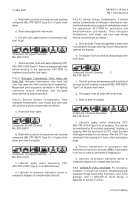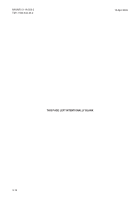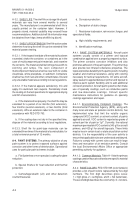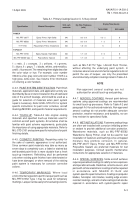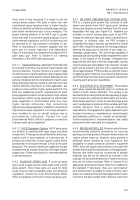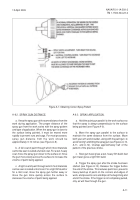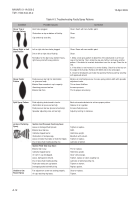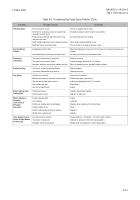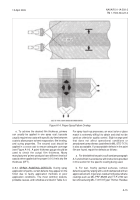TM-1-1500-344-23-2 - Page 178 of 240
A-8
NAVAIR 01-1A-509-2
TM 1-1500-344-23-2
15 April 2009
A-5.8. DECAL MARKING EQUIPMENT. The Gerber
Edge adhesive stencil making system and Avery
Techniflex adhesive vinyl are the recommended products
for aircraft decal markings; however, any equivalent
system may be used.
A-6. GENERAL MAINTENANCE REQUIREMENTS
FOR PAINT SPRAY EQUIPMENT.
Proper maintenance
is necessary to preserve the life of the paint spray
equipment and ensure high quality results. The spray
gun requires little maintenance if kept clean. Two part
catalyzed coatings cure or harden by chemical reaction
in addition to solvent evaporation. The curing process
begins when the two components are mixed. Over a few
hours, the coating will gel and harden regardless of
whether or not it is exposed to air. If catalyzed materials
are allowed to remain in the equipment too long, the
equipment will become inoperative. For this reason,
paint equipment shall be thoroughly cleaned immediately
after use or at least every four hours.
A-6.1. PAINT EQUIPMENT CLEANING. Paint spray
equipment cleanup procedures are controlled by EPA
regulations. Local and state pollution control districts
may also have specific requirements. Consult the local
Environmental Affairs Office for specific requirements.
Generally approved cleaning solvents and methods are
listed below.
A-6.1.1. Paint Cleaning Solvent. To effectively remove
residue, paint equipment cleaning solvents must be
compatible with the type of coating material. In general,
residue from polyurethane coatings such as
MIL-PRF-85285 and TT-P-2760 can be removed using
MIL-T-81772 Type I Thinner. Residue from epoxy
coatings such as MIL-PRF-22750 and MIL-PRF-23377
can be removed using MIL-T-81772 Type II Thinner.
Uncured residue from waterborne coatings such as
MIL-PRF-85582 can be removed using a combination
of water and TT-I-735 (Isopropyl Alcohol). To prevent
corrosion, do not allow water to remain in the paint
equipment. Consult specific manufacturer's instructions
for guidance on cleaning solvents for each individual
coating.
WARNING
Eye protection and solvent proof gloves (no
latex) must be worn during use and maintenance
of the paint gun washer.
Rags and other cleaning materials saturated
with waste solvent are a potential fire hazard
and therefore shall be deposited in a suitable
container immediately after use. The container
shall be covered with a tight fitting lid and kept
closed except when depositing or removing
cleaning materials.
A-6.1.2. Paint Gun Washers. These washers consist of
an automated, close-loop spray system that flushes
and cleans both interior and exterior of HVLP paint guns
Figure A-5. Wet Film Thickness Gage
Back to Top

